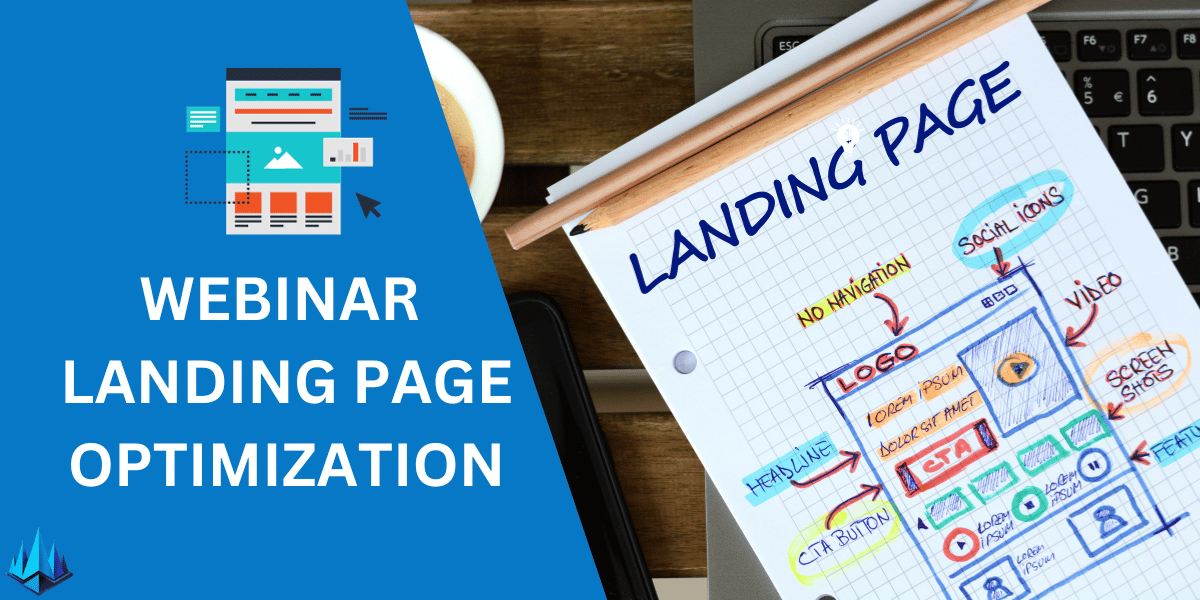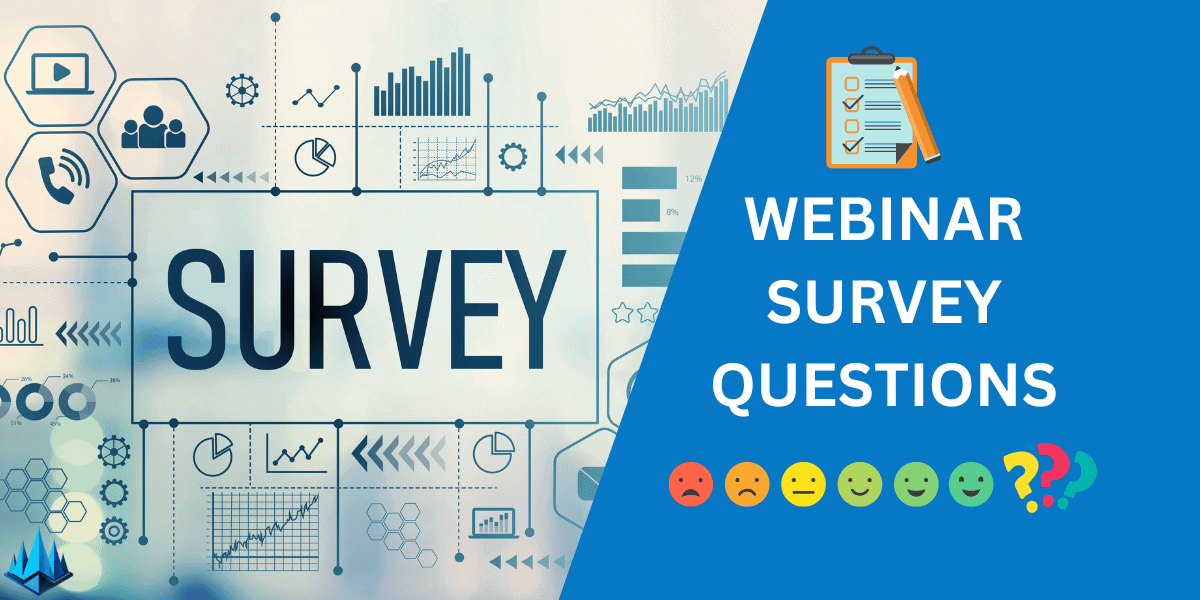A SaaS integration platform is a technology that connects different software applications and enables them to exchange data seamlessly. With the increasing use of cloud-based software applications, businesses need a reliable way to integrate them. SaaS integration platforms solve this problem by providing a centralized platform for integrating all the software applications a business uses.
Understanding the SaaS Integration Platform is crucial for businesses that want to streamline their data management processes. Integration platforms are necessary because they allow businesses to connect different software applications, even if they are from different vendors. This eliminates the need for manual data entry and reduces the chances of errors. Additionally, integration platforms provide a centralized platform for monitoring and managing data flows between different software applications.
Key Takeaways
- SaaS integration platforms provide a centralized platform for integrating all the software applications a business uses.
- Integration platforms eliminate the need for manual data entry and reduce the chances of errors.
- Integration platforms provide a centralized platform for monitoring and managing data flows between different software applications.
Understanding the SaaS Integration Platform
At its core, a SaaS Integration Platform is a digital translator that ensures all your different software applications, whether SaaS or on-premises, talk to each other seamlessly. It connects one SaaS product with another through an application programming interface (API). The platform lets you build low-code or no-code workflows to exchange data between the various on-prem and cloud SaaS applications your team uses.
SaaS integration is the process of connecting the apps together, allowing them to “talk to each other.” Whether to synchronize the data in multiple locations or to move data along a process from application to application, SaaS integration automates that process. It ensures all your different software applications, whether SaaS or on-premises, talk to each other seamlessly.
The SAAS integration platform, which you may use through a web browser, is, first and foremost, a simple subscription-based model. The steps involved in producing SAAS software include design, creation, testing, delivery, and maintenance as a basic stage. During this phase, security, capacity, efficiency, and scalability are all tested.
There are three main approaches to SaaS integration platforms. Embedded SaaS integration platforms, or embedded iPaaS, are used by engineers and product teams at B2B SaaS companies to provide their customers with native integrations. Unified APIs are constrained APIs that enable engineering teams to interact with multiple SaaS APIs at once. Finally, standalone SaaS integration platforms are used by businesses to integrate their SaaS products with other software and applications.
In summary, a SaaS Integration Platform is a digital translator that ensures all your different software applications, whether SaaS or on-premises, talk to each other seamlessly. It connects one SaaS product with another through an application programming interface (API). The platform lets you build low-code or no-code workflows to exchange data between the various on-prem and cloud SaaS applications your team uses.
The Necessity of Integration Platforms
As businesses continue to adopt cloud-based SaaS applications, the need for integration platforms becomes increasingly important. Integration platforms allow us to connect different applications and systems, such as ERP, HR, CRM, and sales automation, to create a seamless flow of information.
Without integration platforms, we would have to manually transfer data between different systems, which can lead to errors and inefficiencies. Integration platforms automate this process, saving us time and reducing the risk of errors.
One of the key benefits of integration platforms is their ability to connect cloud-based applications with on-premise systems. This is important because many businesses still rely on legacy systems that are not cloud-based. With integration platforms, we can connect these systems to our cloud-based applications, allowing us to access all our data in one place.
Integration platforms also make it easier to automate workflows. For example, we can set up workflows to automatically create new leads in our CRM system when a new contact is added to our email marketing platform. This automation saves us time and ensures that our data is always up-to-date.
There are several types of integration platforms available, including Integration Platform as a Service (iPaaS) and Embedded SaaS Integration Platforms. iPaaS solutions, such as MuleSoft and Dell Boomi, provide a comprehensive set of capabilities that can support different integration scenarios. Embedded SaaS Integration Platforms, such as Box and Salesforce, are used by engineers and product teams at B2B SaaS companies to provide their customers with native integrations.
In conclusion, integration platforms are a necessity for businesses that use multiple SaaS applications and systems. They allow us to connect different applications and systems, automate workflows, and access all of our data in one place. With the rise of cloud-based applications, the need for integration platforms will only continue to grow.
Types of SaaS Integration Platforms
There are several types of SaaS integration platforms available in the market today, each with its own unique features and benefits. In this section, we will discuss some of the most common types of SaaS integration platforms.
Native Integrations
Native integrations are pre-built integrations that the SaaS vendor develops. They are designed to work seamlessly with other applications within the same ecosystem. Native integrations are typically easy to set up and require minimal configuration.
API Integration
API integration involves connecting two or more applications through their APIs. This type of integration requires some level of technical knowledge and expertise. API integration allows for greater flexibility and customization, enabling developers to create custom workflows and automation.
Embedded iPaaS
Embedded iPaaS (integration platform as a service) is a type of SaaS integration platform that is built into a larger application. This type of integration platform is designed to provide users with a seamless experience, allowing them to access all of their integrations from a single interface.
Middleware
Middleware is software that acts as a bridge between two or more applications. It is designed to facilitate communication and data exchange between different applications. Middleware can be used to integrate both on-premise and cloud-based applications.
Each of these types of SaaS integration platforms has its own advantages and disadvantages. When choosing a SaaS integration platform, it is important to consider your specific needs and requirements. We recommend evaluating multiple options and selecting the best platform for your needs.
Key Features of SaaS Integration Platforms
At our company, we believe that SaaS integration platforms are essential for businesses that want to streamline their operations and increase efficiency. These platforms offer a variety of features that can help organizations achieve their integration goals. In this section, we will discuss some of the key features of SaaS integration platforms.
Connectivity
One of the most important features of SaaS integration platforms is connectivity. These platforms offer a wide range of pre-built connectors and adapters that enable seamless integration with popular SaaS applications, such as CRM systems, marketing automation tools, HR software, etc. This means that businesses can easily connect their various applications and systems without the need for custom coding or development.
Data Integration
Another important feature of SaaS integration platforms is data integration. These platforms provide tools for data mapping, transformation, and synchronization, allowing businesses to consolidate data from multiple sources and create a single source of truth. This can help organizations gain a better understanding of their data and make more informed decisions.
Application Integration
SaaS integration platforms also offer application integration capabilities. This means that businesses can integrate their SaaS applications with on-premises systems or other cloud-based applications. This can help organizations create a more seamless user experience and improve overall efficiency.
Data Transformation
Data transformation is another key feature of SaaS integration platforms. These platforms provide tools for data mapping, transformation, and normalization, allowing businesses to transform data from one format to another. This can help organizations ensure that their data is consistent and accurate across all of their systems.
Interoperability
Interoperability is also an important feature of SaaS integration platforms. These platforms provide tools for creating and managing APIs, allowing businesses to connect their various applications and systems easily. This can help organizations create a more connected ecosystem and improve overall efficiency.
Data Exchange
SaaS integration platforms also offer data exchange capabilities. This means that businesses can easily exchange data between their various applications and systems. This can help organizations create a more seamless user experience and improve overall efficiency.
Data Pipelines
Finally, SaaS integration platforms provide tools for creating and managing data pipelines. These pipelines allow businesses to automate data workflows and processes, reducing the need for manual intervention. This can help organizations save time and improve overall efficiency.
In conclusion, SaaS integration platforms offer a variety of features that can help businesses streamline their operations and increase efficiency. From connectivity and data integration to application integration and data transformation, these platforms provide the tools and capabilities businesses need to achieve their integration goals.
Benefits of SaaS Integration Platforms
At our company, we believe that SaaS integration platforms offer a wide range of benefits for businesses of all sizes. Here are some of the benefits that we have observed:
Cost Savings
One of the most significant benefits of using a SaaS integration platform is cost savings. By integrating your SaaS applications, you can reduce the need for manual data entry and other time-consuming tasks. This can help you save money on labor costs and reduce the risk of errors.
Improved Security
SaaS integration platforms can also help improve the security of your data. By centralizing your data and using a single sign-on (SSO) system, you can reduce the risk of data breaches and other security issues. Additionally, many SaaS integration platforms offer advanced security features like encryption and multi-factor authentication.
Enhanced Infrastructure
SaaS integration platforms can also help enhance your infrastructure. By integrating your SaaS applications, you can create a more connected enterprise that can better share data and collaborate. This can help improve your overall productivity and efficiency.
Streamlined Maintenance
Another benefit of using a SaaS integration platform is streamlined maintenance. With a centralized platform, you can easily manage all your integrations in one place. This can help reduce the need for manual maintenance and troubleshooting, which can save you time and money.
Improved Customer Relationship Management (CRM)
SaaS integration platforms can also help improve your customer relationship management (CRM). By integrating your CRM system with other applications like your email marketing platform or your customer service software, you can create a more holistic view of your customers. This can help you provide better customer service and improve customer satisfaction.
Enhanced Enterprise Resource Planning (ERP)
SaaS integration platforms can also help enhance your enterprise resource planning (ERP). By integrating your ERP system with other applications like your accounting software or your inventory management system, you can create a more comprehensive view of your business operations. This can help you make more informed decisions and improve your overall efficiency.
Improved Customer Service
Finally, SaaS integration platforms can help improve your customer service. By integrating your customer service software with other applications like your CRM system or your email marketing platform, you can create a more seamless customer experience. This can help improve customer satisfaction and loyalty.
Overall, we believe that SaaS integration platforms offer a wide range of benefits for businesses of all sizes. From cost savings to improved security and enhanced infrastructure, the benefits of using a SaaS integration platform are clear.
Challenges and Solutions in SaaS Integration
SaaS integration poses several challenges that must be addressed to ensure a seamless and efficient integration process. Here are some of the most common challenges and solutions that we have encountered in our experience with SaaS integration:
Data Silos
One of the biggest challenges in SaaS integration is dealing with data silos. Data silos occur when data is stored in different applications and cannot be easily accessed or shared. This can result in data inconsistencies and duplication, which can cause significant problems for businesses.
To overcome data silos, we recommend using a data integration platform that can connect all your applications and unify your data. This will enable you to access and share data across all your applications, eliminating data silos and ensuring data consistency.
Servers and Storage
Another challenge in SaaS integration is dealing with servers and storage. As your business grows, you may need to scale up your servers and storage to accommodate the increasing amount of data you generate and store.
To overcome this challenge, we recommend using a cloud-based SaaS integration platform that can provide scalable servers and storage. This will enable you to easily scale up or down as needed without worrying about managing your own servers and storage.
Service Provider
Choosing the right service provider is also a critical factor in successful SaaS integration. You must ensure that your service provider has the expertise and experience to handle your integration needs and provide the necessary support.
To overcome this challenge, we recommend choosing a reputable and experienced service provider specializing in SaaS integration. This will ensure that you get the best possible service and support and that your integration project is completed successfully.
Collaboration
Collaboration is another challenge in SaaS integration, especially when dealing with multiple teams and stakeholders. You must ensure everyone is on the same page and working towards the same goals.
To overcome this challenge, we recommend using collaboration tools that enable you to communicate and collaborate with your team and stakeholders. This will ensure that everyone is informed and involved in the integration process and that any issues or challenges are addressed promptly.
Engineers
Finally, finding skilled engineers who can handle SaaS integration can be challenging. You must ensure that your engineers have the necessary skills and experience to handle your integration needs.
To overcome this challenge, we recommend partnering with a service provider that has a team of skilled and experienced engineers who specialize in SaaS integration. This will ensure that you get the best possible service and support and that your integration project is completed successfully.
In conclusion, SaaS integration poses several challenges that must be addressed to ensure a seamless and efficient integration process. By using the right tools, choosing the right service provider, and working with skilled engineers, you can overcome these challenges and achieve successful SaaS integration.
Role of APIs in SaaS Integration Platforms
At the heart of any SaaS integration platform lies the API (Application Programming Interface). APIs act as the bridge between different software applications, allowing them to exchange data and communicate with each other seamlessly. In fact, APIs are the backbone of SaaS integration platforms, enabling them to provide a wide range of integration options and functionalities.
APIs are essential for SaaS integration platforms because they allow different software applications to communicate with each other in a standardized way. This means that developers can use APIs to build integrations between different software applications quickly and easily without having to worry about the underlying technical details.
Many different types of APIs can be used in SaaS integration platforms, each with its own strengths and weaknesses. For example, REST APIs are widely used in SaaS integration platforms because they are simple, lightweight, and easy to use. SOAP APIs, on the other hand, are more complex and powerful but also more difficult to use.
One of the key benefits of using APIs in SaaS integration platforms is that they make it possible to integrate different software applications over the internet. This means businesses can use SaaS integration platforms to connect their on-premise software applications with cloud-based applications, enabling them to access data and functionality from anywhere in the world.
Another important benefit of using APIs in SaaS integration platforms is that they make it possible to automate many different types of business processes. For example, APIs can be used to automate the process of sending emails, updating customer records, and processing payments, among many other things.
Overall, APIs play a critical role in SaaS integration platforms, enabling businesses to connect their software applications and automate many different types of business processes. By leveraging the power of APIs, businesses can streamline their operations, reduce costs, and improve their overall efficiency and productivity.
SaaS Integration in Different Business Applications
At its core, SaaS integration platforms are designed to connect different software applications and allow them to communicate with each other. This can be particularly useful for businesses that rely on multiple software applications to manage their operations. By integrating these applications, businesses can streamline their workflows, reduce errors, and improve overall efficiency.
One area where SaaS integration can be particularly useful is in marketing. Many marketing teams rely on various tools to manage their campaigns, including email marketing software, social media management tools, and analytics platforms. By integrating these tools, businesses can gain a complete view of their marketing efforts and make more informed decisions.
Another area where SaaS integration can be useful is in finance. Many businesses use accounting software to manage their finances, but this software may not be able to integrate with other tools, such as CRM software or inventory management systems. By integrating these tools, businesses can gain a complete view of their finances and make more informed decisions.
SaaS integration can also be useful in other areas, such as human resources, customer service, and operations. For example, businesses may use HR software to manage employee data, but this software may not be able to integrate with other tools such as payroll software or time tracking software. By integrating these tools, businesses can streamline their HR processes and reduce errors.
When it comes to choosing a SaaS integration platform, businesses have a variety of options to choose from. Some popular options include Celigo, Dell Boomi, and MuleSoft. It’s important to choose a platform that is compatible with the software applications you use, and that offers the features you need.
Overall, SaaS integration can be a powerful tool for businesses looking to streamline their operations, reduce errors, and improve efficiency. By integrating different software applications, businesses can break down silos and gain a more complete view of their operations.
Understanding iPaaS
At its core, iPaaS (Integration Platform as a Service) is a cloud-based solution that simplifies the process of integrating different software applications. iPaaS offers a visual interface that allows users to design, orchestrate, deploy, and manage integrations between systems. With iPaaS, users can share data across SaaS applications, on-premise applications, and other cloud deployments.
One of the key benefits of iPaaS is its ability to streamline integration processes. This is especially true for low-code or no-code platforms, which allow users to create integrations without requiring extensive coding knowledge. This means that business technologists, citizen and professional developers, integration specialists, and consultants can all use iPaaS solutions out-of-the-box to build the integration quickly for sharing data within an organization or with multiple companies.
iPaaS platforms typically provide a centralized dashboard or user-friendly interface that allows users to manage integrations and data flows across disparate cloud and on-premises applications. This helps handle the full lifecycle of APIs, automate business processes, and orchestrate workflows across multiple applications – all with a centralized integration platform.
One of the most significant benefits of iPaaS is its flexibility. With iPaaS, users can connect various applications and systems, including HRIS, electronic data interchange (EDI), and Adobe, among others. This means that iPaaS can help organizations of all sizes and industries streamline their integration processes, regardless of the systems they use.
Overall, iPaaS is an essential tool for any organization looking to streamline their integration processes. With its low-code or no-code platforms, visual interface, and ability to connect a wide range of applications and systems, iPaaS is an ideal solution for businesses of all sizes and industries.
The Future of SaaS Integration Platforms
At our company, we believe that the future of SaaS integration platforms is bright. With the increasing use of mobile devices and the need for seamless integration between different applications, integration platforms are becoming more important than ever before.
One of the key trends that we see in the future of SaaS integration platforms is the increasing focus on non-technical business users. As more and more businesses move their operations to the cloud, the need for integration platforms that are easy to use and require minimal technical expertise will only increase. We believe that integration platforms that non-technical business users can use will become increasingly popular in the coming years.
Another trend we see in the future of SaaS integration platforms is the importance of scalability. As businesses continue to grow and their needs change, they need integration platforms to scale with them. We believe that integration platforms that are designed with scalability in mind will become increasingly popular in the future.
Logging is another area where we see significant growth in the future of SaaS integration platforms. With the increasing importance of data privacy and security, businesses need integration platforms that can provide detailed logging and auditing capabilities. We believe that integration platforms that provide robust logging capabilities will become increasingly important in the future.
Hosted applications are also becoming more important in the future of SaaS integration platforms. With the increasing use of cloud-based applications, businesses need integration platforms that can seamlessly integrate with these applications. We believe that integration platforms that can integrate with a wide range of hosted applications will become increasingly popular in the future.
Finally, we believe that data warehousing will become increasingly important in the future of SaaS integration platforms. As businesses generate more and more data, they need integration platforms that can help them store, process, and analyze this data. We believe that integration platforms that provide robust data warehousing capabilities will become increasingly important in the future.
Overall, we believe that the future of SaaS integration platforms is bright. With the increasing use of cloud-based applications and the need for seamless integration between these applications, integration platforms will become increasingly important in the coming years. We are excited to be at the forefront of this trend and look forward to helping businesses integrate their applications in the future.
Frequently Asked Questions
How can businesses benefit from using integration platforms for SaaS applications?
Integrating SaaS applications can help businesses streamline their workflows, reduce manual data entry, and increase overall efficiency. By using a SaaS integration platform, businesses can automate data transfer between different applications, reducing the risk of errors and improving data accuracy. This can help businesses make better-informed decisions and improve their overall performance.
What are the key features to look for in a SaaS integration platform?
When choosing a SaaS integration platform, businesses should look for features like ease of use, scalability, security, and flexibility. It’s important to choose a platform that can support a wide range of applications and data formats, as well as one that can handle large volumes of data. Additionally, businesses should look for a platform with robust security features to protect sensitive data.
What are some common challenges that businesses face when integrating SaaS applications?
Some common challenges that businesses face when integrating SaaS applications include data integration, application compatibility, and security. Data integration can be challenging due to differences in data formats and structures between different applications. Application compatibility can also be an issue if applications are not designed to work together. Finally, security is a major concern when integrating SaaS applications, as sensitive data can be at risk if not properly protected.
How do SaaS integration platforms differ from traditional integration platforms?
SaaS integration platforms differ from traditional integration platforms in several ways. First, SaaS integration platforms are designed specifically to integrate cloud-based applications, whereas traditional integration platforms are designed to integrate on-premise applications. Additionally, SaaS integration platforms are typically easier to use and more flexible than traditional integration platforms, as they can be accessed from anywhere and do not require costly hardware or software installations.
What are some best practices for developing a SaaS integration strategy?
Some best practices for developing a SaaS integration strategy include identifying business goals, selecting the right integration platform, and establishing clear data governance policies. It’s important to have a clear understanding of what you want to achieve with your integration strategy, as well as which applications you need to integrate. Additionally, businesses should choose a SaaS integration platform that meets their specific needs and establish clear data governance policies to ensure data accuracy and security.
How can SaaS integration platforms help improve overall business efficiency?
SaaS integration platforms can help improve overall business efficiency by automating manual processes, reducing the risk of errors, and improving data accuracy. By integrating different applications, businesses can streamline their workflows and reduce the amount of time and effort required to transfer data between applications. This can help businesses make better-informed decisions and improve their overall performance.











